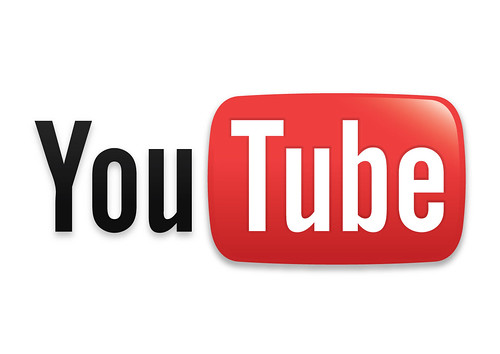An online web presence was created for the Net11 subject being delivered online by Curtin University. The following aims to critically explain and interpret course materials in terms of decisions made in the creation. This personal web presence aims for a semi-professional look and feel in response to researching current digital shadows and current online presence. As well as being informational, it is hoped the page achieves its purpose of being ranked on search engines and conveying to viewer’s information regarding the work of the author as a remedial massage therapist.
The online user name that becomes the title of each node serves as an introduction. Different titles were considered with importance placed on including a real, full name and some indication of what the pages are about. Online tools were used to quickly check availabilities of names across platforms (namechk.com, 2010). The name “adamreesremedialmassage” was shortened to “adamreesremedial” to achieve this purpose. A full name should influence search engine ranking – a defining feature of Web 2.0 (O’Reilly, 2005). The web presence will be competing with other social networking sites for ranking in search results. I believe a full name is important for this reason and also to convey confidence in yourself and the information.
Aggregated search tools such as Spezify were used to research what is currently online. My name with quotations revealed images, Ezine articles for shin splint treatment ideas, piriformis syndrome treatment and organic gardening information (spezify.com, 2010). The web presence was created to expand upon and bring together these interests. For example, the central node directly relates to treating injuries and mentions organic gardening on the ‘about me’ page. The Delicious bookmarks include respected organic gardening personalities within the sports injury and remedial massage pages. As well as bookmarking the page of well known organic gardener Jerry Coleby-Williams, another bookmark links to a blog photo of Jerry and me on a tour of his garden.
A consideration for nodes was the ease of use, support and functionality of the platform. Blogger would provide generated links to the contributing nodes via menus and also allow extra information into the sidebars. The WISIWYG editor is suitable for efficient posting while the HTML will allow enough customisation capability to create a unique design and feel. As this web presence topic is a real profession, it is important that people know the author has training and skills in the subject matter. Blogger’s sidebar features of creating text book lists and integrating twitter updates give further insight into academic reading and activities. Blogger also separates form from content by using really simple syndication (RSS). Submitting a blog post becomes an efficient signal or alert of something of interest happening (McAfee, 2006). RSS buttons are automatically added to the sidebar to enable a feed of aggregated blog posts and/or comments into the individual’s reader.
Contributing nodes build upon information provided on the main blog in more interactive and enriched ways. Twitter was chosen as the micro blogging element that would feed directly into the blog side panel for up to the hour information. This will keep the blog changing between postings and notify followers of updates and changes. Twitter has been very simple to use across platforms and mobile devices. These facts make twitter the best example of a modern Web 2.0 tool with many features we have spoken about throughout this course. Readers may also be able to see other athletes and inspirational people I follow on twitter. Being able to convey such insight to others with minimum effort ensured twitter was used as a contributing node.
A similar principle applies to the second contributing node – delicious bookmarks. After relevant sites were discovered and added to my account it became a good stand alone resource for like minded people. People who are seeking to find out about me will appreciate a quick link at the top of the main blog to see this collection of bookmarks for further research. Some of the bookmarks could be critically analysed as a future blog entry.
The last official contributing node chosen was a You Tube channel. The videos that I compile here and deem useful as a professional will likely be of interest to visitors. It again provides insight into how I work in a way that text simply is unable. For this reason it was chosen over LinkedIn. LinkedIn may be appropriate for individuals seeking employment and to network. This does not benefit a self employed professional or offer the insight that video does. Personal treatment videos would be most beneficial; however this collection on the You Tube channel is a good substitute until that is done. The You Tube node carries the same name although in parts it does carry a previous name that seemed unable to be changed.
Overall design across each node was considered and a basic design theme attempted. This included the use of uniform colours, background and banner images and Arial text whenever possible. The aim was that a running logo and colour would provide an identity across the nodes. Arial text gives a formal and presentable look for a web presence that is concerned with health care. The portrait photo was kept the same.
Although the majority of images used were either original creations or purchased at Istockphoto.com, there was use of creative commons licensing for the top contributing node buttons. Creative commons offers ‘flexible copyright management tools for creative work’ (creativecommons.org.au, 2010). Images with this licence were searched for on the flickr website – an example of this was the You Tube button (redsoul300, 2009).
References
Creative commons Australia (2010). Learn More about Creative commons. Retrieved January 30, 2010, from http://creativecommons.org.au/learn
McAfee, A., (2006). The Signal Core. Retrieved January 30, 2010, from http://andrewmcafee.org/2006/09/the_signal_core/
O’Reilly, T., (2005) What Is Web 2.0 – Design Patterns and Business Models for the Next Generation of Software. Retrieved January 30, 2010, from http://oreilly.com/web2/archive/what-is-web-20.html?page=1
Redsoul300, (2009).Youtube logo. Retrieved February 20, 2010, from http://www.flickr.com/photos/23963573@N08/3606295240/







